How Shashikant Khandelwal is making Facebook ads relevant for over a billion people
Shashikant Khandelwal is the Co-founder and CTO TheFind.com which was acquired by Facebook in 2015. At Facebook, he’s working on dynamic ads and growing the business from sub-$100 million to billions of dollars run-rate.
So, I was keeping a secret for really long time. The one I believed must be well guarded. In 2015, I discovered that I didn't see ads on my Facebook wall. I confirmed this by looking at the site’s web browser and mobile app, and was delighted to know that unlike almost all my friends, I had the prerogative to not see those ads. I thought it must be a bug and I should report it. But it meant ruining my xterxperience, so I kept the secret until very recently, I decided to share it with Shashikant Khandelwal. After all, he’s an Engineering Manager at Facebook who would have an answer to that. He listened to patiently and answered,
Here's probably the reason why — some percentage of users are randomly put into the bucket where no ads are shown. This is to measure the engagement of users who don't see ads vs people who see ads.
This aroused mixed feeling in me. Firstly, what I thought of as a secret was me being a part of a random experiment. But hey, I still get to be one of the lucky few (for now at least).

Shashikant, our Techie Tuesdays’ star of the week, is now building a new direct response (DR) advertising products at Facebook for verticals such as e-commerce, travel, automotive and real estate, thus growing the business from sub-$100 million to billions of dollars run-rate. His previous startup TheFind.com, one of the world’s largest shopping search engine, was acquired by Facebook in 2015. He’s now working on making Facebook ads relevant for its more than a billion users by leveraging what he built at TheFind.
A BITS Pilani and Stanford alumnus, Shashikant is a living testimony to what courageous decisions can lead you to. Here’s the story of how a boy from a humble background in Nagpur is now helping Facebook build multi-billion-dollar businesses.
Related read - Meet Kiran Bhat—the man who engineered Hulk and Tarkin to win 2017 sci-tech Oscar
Modest upbringing
Shashikant was born and brought up in Nagpur, Maharashtra, where his whole family lived. He belonged to a relatively lower-middle-class household with his father working as a civil engineer in the irrigation department and his mother a housewife. The family lived in a one room house.
In Class V, Shashikant joined Somalwar High School, one of the best in Nagpur, on the recommendation of his previous school teachers, given his excellent academic record. Shashikant always had a liking for languages but eventually his interest grew in Maths-Science. He says, “I never learnt equally from all the teachers. My Hindi teacher and Sanskrit teacher had a huge impression on me. They taught with a lot of passion and love and their stories stayed with me.”
In class IX, Shashikant went to the retired Prof Phansalkar for National Talent Search Examination (NTSE) exam preparation. He credits Prof Phansalkar and other teachers in that class for fuelling his love of learning, especially in Math and Science.
At Junior College, Shashikant took admission to pursue medicine but within a couple of weeks, he changed that decision based on a chat with one of his father's friends who was a doctor. He told Shashikant: "Given that you don't have any doctors in your family already, it's going to be a long road for you (and cost a lot) to become a doctor.”
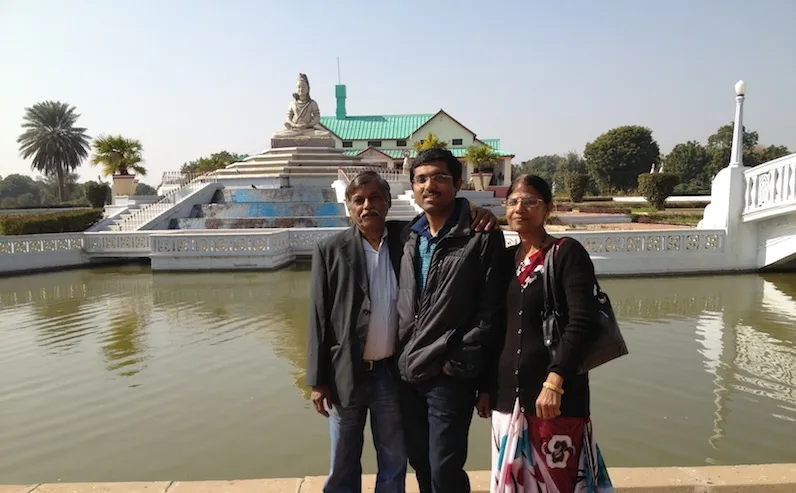
Shashikant then joined the electronics stream and decided to pursue engineering. Looking back, he often gets reminded of the pains his parents took for his education. He recalls,
We used to stay in eastern Nagpur whereas all the good schools and coaching institutes were in western Nagpur. We took up one room (no separate kitchen) in western Nagpur just to avoid the commute time while I was in Class X and till Class XII. My mom, sister and I stayed there.
Shashikant’s school toppers had earlier gone to BITS Pilani and he too decided to prepare for the same. In Class XII, he was the only student in the entire state of Maharashtra who scored 300 out of 300 in Physics, Maths, Chemistry (PCM). He got into BITS Pilani and took Electrical and Electronics Engineering (EEE) which was the best branch back then. It was the first time Shashikant stepped out of Nagpur (barring the time he went to Mumbai and Pune for exams).
You may also like -Meet Mitesh Agarwal—the 'brain' of BITS who’s heading technology at Oracle India
Stepping into the new world – BITS Pilani
Shashikant credits BITS Pilani for pretty much anything and everything he has achieved in his life. He remembers the following highlights from his life at BITS Pilani:
- BITS had no minimum attendance requirement. That gave a lot of freedom.
- College had a huge diversity of students and he ended up making many friends. He says, “Even today, people find it remarkable that I know so many BITSians from different batches.”
- He was happy that BITS was meritocracy-driven with no reservation.
After attending classes for the first month, Shashikant decided to study on his own and skip classes. In the first two years, he attended merely four (out of 28) courses. But he still maintained a 10-pointer. He then successfully applied for a transfer to Computer Science.
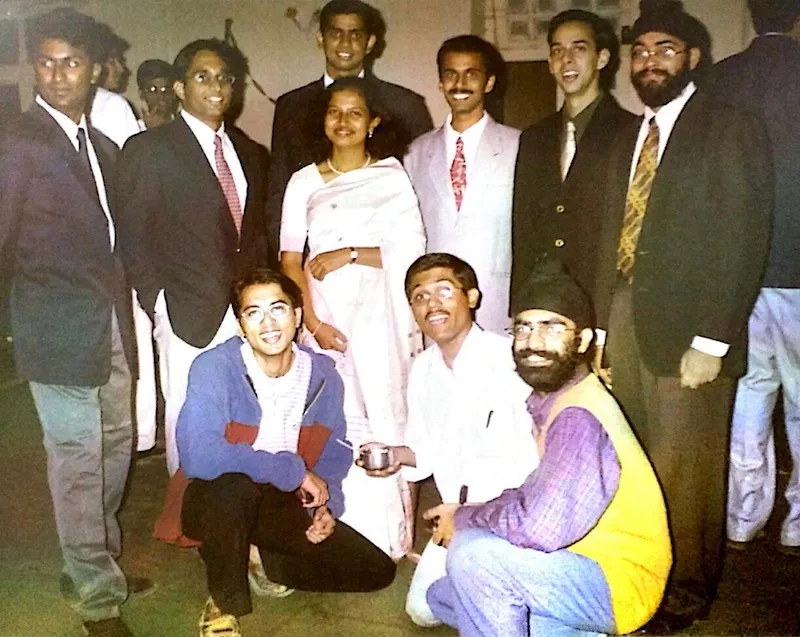
Shashikant went to the INSEAD Business School, France, for a six-month long internship. He continued to stay and work in INSEAD after his graduation and worked in the IT department of the institution on multiple technical projects.
The admissions dilemma
Shashikant got offers of admission from Stanford, UIUC and Purdue for a master’s programme. UIUC and Purdue offered full scholarship but he was keen to go to Stanford which unfortunately didn't offer any scholarship and he had no money. Even banks couldn’t give him a loan for completing the entire course. Finally, he got his father's very good friend in India to sponsor his visa. He says, "Of course, the understanding was that I'll not take any money from him. I had fees for one quarter (~$18000 from INSEAD job and a small loan) and planned to find research assistantship in that time.”
Shashikant couldn’t find an assistantship in the first quarter. In the second quarter, his roommate forwarded him an email in which a professor was looking for part-time assistant in the Mechanical Department. He applied and got that. That's how he survived and moved on to the second quarter. Thereafter, somehow, he kept getting opportunities and earned enough to pay for the tuition fees.
Also read - From UP to the US: The journey of Abhinav Asthana and his affair with APIs
Introduction to search engines
When Shashikant joined Stanford, he wanted to study Computer Networks (because he didn't know much about other things). In his first term, he was introduced to search engines. In his second year, he got influenced by the startup craze and started attending events and networking. He adds,
“One day, Professor Prabhakar Raghavan, who taught the course Information Retrieval, introduced me and my friend to his classmates from IIT Madras, Nanda Kishore and Siva Kumar, who were starting a company. I liked the idea and started to build the product.”
The whole thing was running on Shashikant’s desktop. One thing led to the other and soon the startup received bridge funding. That’s when Shashikant decided to quit his ongoing internship (and a job offer) at Microsoft to work to full time on the startup. He was on the way to finishing his master’s at Stanford, but because of the startup and the issues he faced with his visa, he postponed his MS course and continued in the startup as an intern for three quarters.
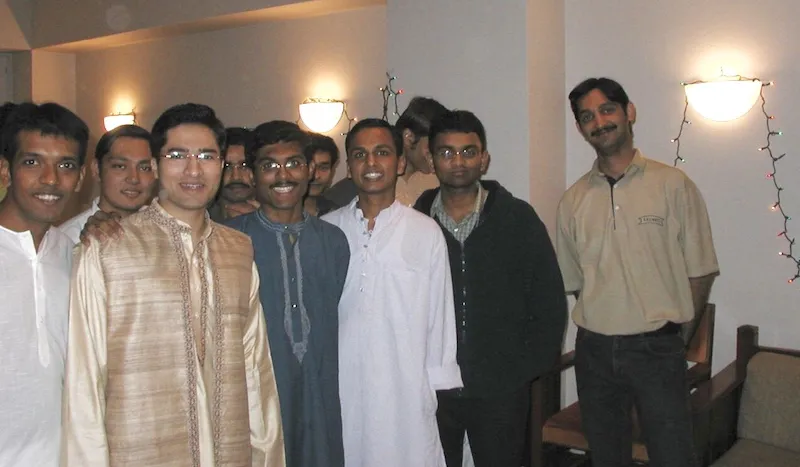
Journey with TheFind.com
The first two years of the TheFind.com were a classic startup euphoria for Shashikant. In the first year, he worked on shopping search engine starting with tickets of events — sports/games and so on — but soon realised that the ticket category wasn't a great choice. In 2006, the company decided to move away from tickets and focus on products. Shashikant recalls,
We were crawling hundreds of websites to extract data (information extraction). Without writing site specific code, we could extract products, and hence keep our catalogue up to date. We built a fairly complex crawler for this and scaled from a few websites crawling to hundreds and later to thousands.

After a few years, Shashikant earned credibility and became the CTO of the TheFind and worked on both technology and business front. Looking back, Shashikant can break the business journey at TheFind into the following phases:
- Ticket business — tried and failed
- Built a real scalable technology based on which the company raised Series B and C funding
- Invested in data centres, machines, and other infrastructure
- Focussed on increasing the traffic
- Focussed on monetisation (2009-10)
- Achieved profitability and remained so for many years
TheFind.com witnessed a traffic drop in 2011-12 when Google got into the shopping business (Google product listing ads). Google prioritised its own modules over all other sites of that time; as a result, many companies such as Nexttag, shopping.com, shopzilla went through tough times. As a matter of fact, the EU even slapped Google with €2.4 billion ($2.7 billion) fine over antitrust abuses in 2017. To increase the traffic and revenues, TheFind made mobile apps, price comparison apps, price scanning apps, iPad apps, catalogue apps, and a social product called Glimpse. Shashikant says, “We tried pivoting to mobile and social to get more traffic. We kept on growing in these fronts but our web traffic kept decreasing, so overall the company was stagnated in terms of revenues growth.”
Related read - The geek from Egypt who’s taking on the world of big data – meet Cloudera's Amr Awadallah
Technology @ TheFind
Between 2006 and 2010, Shashikant and his team at TheFind created a web-crawler which was one of the biggest across the world. Other than Google, Bing and Yahoo crawlers, there was nothing of that scale. In fact, even today, none of the internet giants have something of that scale. Shashikant created a lot of automated machine learning information extraction technologies to extract products from all sorts of product websites. He adds,
Usually you get html pages in crawling. Now the html pages of Nordstrom are different from that of Walmart which is again different from that of Best Buy and so on. Basically, all of the them are selling products. You've to know which page has products, where's the image, title, description, and price. It's called information extraction.
TheFind created multiple machine learning models for this. According to Shashikant, Bing shopping tried to do this and launched products.live.com but it couldn’t survive. Another company ShopWiki did the same but shut its shop in 2009. Later on, Shashikant came to know people who were pursuing PhD thesis on this topic, whereas he had done all this innovation much before at TheFind.

TheFind’s shopping search engine was the largest vertical search engine in the US. The platform had one billion products. And the company did all this with just a 10 member backend (infra + ML) engineering team which was fairly extra-ordinary. Shashikant adds,
We didn't have Hadoop so we wrote our storage systems from scratch in C++ and Java. We even wrote the scripts to manage 700 machines of our data centres which was managed by just one ops person. At that scale, Lucene and Elasticsearch do not work.
You may also like - The incredible story of Ashish Gupta - how a humble techie from Ludhiana engineered Flipkart’s scale
The world of shopping search engine(s)
While there were four to five startups in comparison shopping, TheFind was uniquely positioned because of one fundamental difference. Shashikant says, “We were in shopping search while others were in comparison shopping. Shopping.com, Shopzilla, PriceGrabber and NexTag were the four players in comparison shopping who primarily took data feeds from top merchants. They had less than 5,000 merchants whereas we had 3,00,000 merchants from whom we crawled the data. We had both free and paid products while the other websites had just paid products from the merchants.”
TheFind even partnered with the other players to showcase their paid listings and helped them make some money. With just a couple of sales people in its team, TheFind made millions of dollars primarily due to these key partnerships.

Shashikant and his team filed multiple patents in information extraction. He then focussed on innovating in entity extraction. This was to help in categorisation and attributes, and eventually to find out how to normalise data across the web. Shashikant and his team built a lot of technology to automatically understand and normalise this data. He claims that apart from Google and Amazon, the only company which had a good (shopping) taxonomy was TheFind. He feels that it's still one of the best taxonomies (even 3 years after the acquisition by Facebook).
Looking back, Shashikant’s best memories of TheFind include:
- The freedom to solve technical challenges
- His involvement in business and decision making
- Working together with a great team (and continuing to do so after Facebook acquisition)
Related read - How 27-year-old Akash Gupta built the largest automation startup of India
The Facebook acquisition
By 2014, TheFind’s growth had plateaued and the team realised that they were not going to go for an IPO. Shashikant along with many other people knew that they had a distinct technology. During the same time, the company started getting lot of acquisition offers from big companies. Facebook was one of the companies, and the one that seemed the best fit.
It was almost a coincidence that around that time Facebook was working on releasing dynamic ads for e-commerce which was basically taking data feeds from e-commerce websites and having a recommendation engine to show it to users. Facebook advertisement technology at that time didn't use content as much, which happened to be TheFind’s strength (web crawling, entity extraction). Through mutual understanding, TheFind team decided to get acquired. In the end, the product was shut down after acquisition. The technology of TheFind is being used at Facebook to understand e-commerce content and for search and recommendations for users.
At Facebook, Shashikant has pivoted to new verticals and is running travel, automotive and real-estate advertisement businesses as well (in addition to e-commerce).
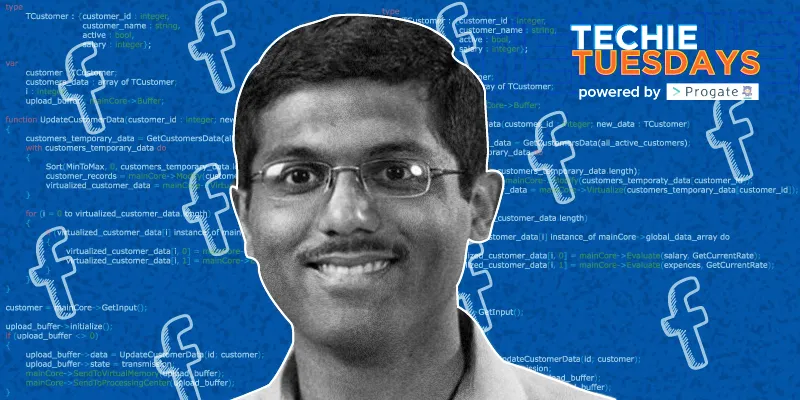
Targeting the intent – the Facebook mantra and Shashikant’s current role
In order to make sure that the Facebook display ads aren't random, the tech team has to know user's intent. Shashikant says, “We're basically trying to guess what the user might be interested in. It's recommendations systems problem.”
In his current role, Shashikant is building products and APIs for brands who want to target specific set of users and helping them configure customised ads. He adds, “We have to take many signals from the user behaviour to categorise him/her. We have to figure out in what stage of the buying journey the user is in right now.”
Then comes format (what will the ad look like) and corresponding ad creation (uploading information and configuration).
Since Shashikant joined, Facebook has incubated new teams for different verticals such as travel and automotive, of which some are already live.
Simply put, if you've posted on Facebook saying 'See you in Las Vegas next week' and there's a long weekend coming, you'll see travel ads on your profile with Las Vegas hotels booking.
According to Shashikant, his team’s biggest challenge is understanding the advertising industry across different verticals such as auto, talking to sales people and advertisers, and then figuring out whether he’s making the right product strategy decisions or not. Their biggest technical challenge is to guess the intent of the user. Shashikant adds,
In Google, the user searches and you give him/her what he/she wants. In Facebook, the user doesn't search, so we have to predict from other signals where the user is in the purchase cycle in order to recommend relevant ads to them.
Related read - Meet Joydeep Sen Sarma, the IITian who revolutionised big data at Facebook
The BITS Pilani connection
Shashikant considers the BITS Pilani alumni as his family in the US. He, along with a team of BITSian friends launched the Embryo project, and they formed a BITS Embryo club with the help of some on-campus faculty to guide students for higher studies. He also led the project (co-shaired by Sarath Kolla) BITS Connect 2.0 — a multi-million dollar cross campus initiative. It comprises immersive telepresence, high-definition video conferencing and live streaming technologies which transform the learning experience by connecting all campuses.
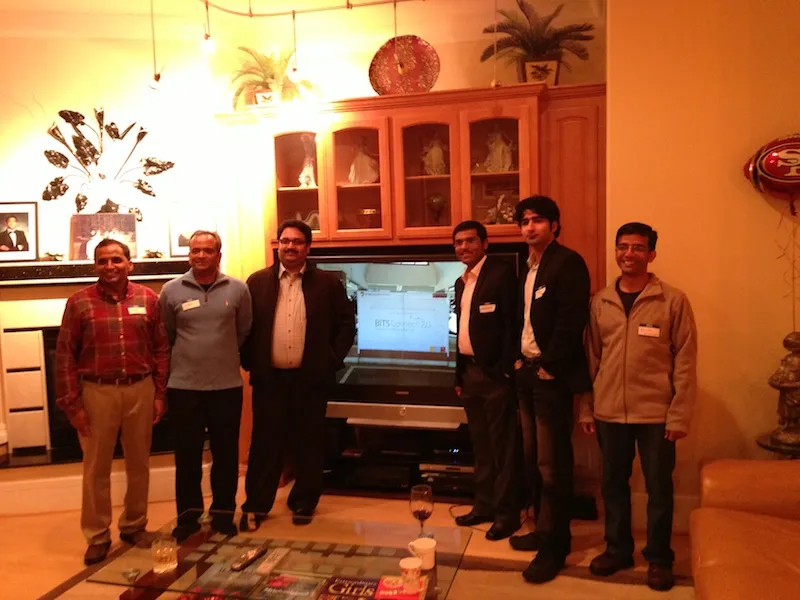
He’s actively involved in many alumni activities and wants to give back to his alma mater according to his maximum capability.
Shashikant Khandelwal – up close and personal
Shashikant’s association with technology is primarily w.r.t. problem solving. He believes that his sweet spot role is that of a CTO — where technology and products intersect. For now, he’s happy being a product technology leader in a big company and later may start his own business.
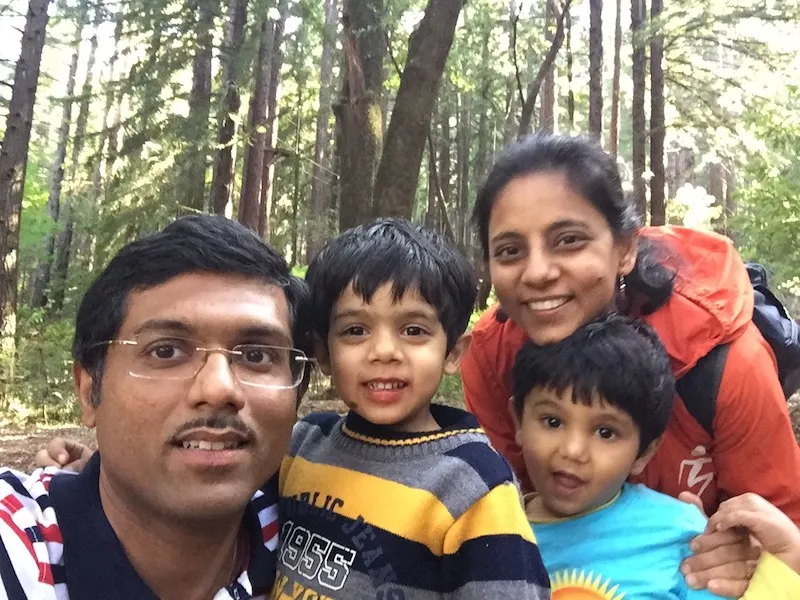
Shashikant looks for the following key qualities while hiring a techie:
- Ability to innovate — do they have the deep knowledge of a specific area and can they solve problems in that area?
- Ability to take ownership, initiatives to drive problems as opposed to just writing code
Shashikant believes that he’s best defined by the following values:
- Loyalty — Given a choice he would prefer a loyal person over a smart person
- Courage — He has always been taking risks, whether it was going to Stanford without money or choosing to join a startup with four jobs in hand
- Innovation — If he’s not doing new things then what's the point
You can connect with him on LinkedIn







